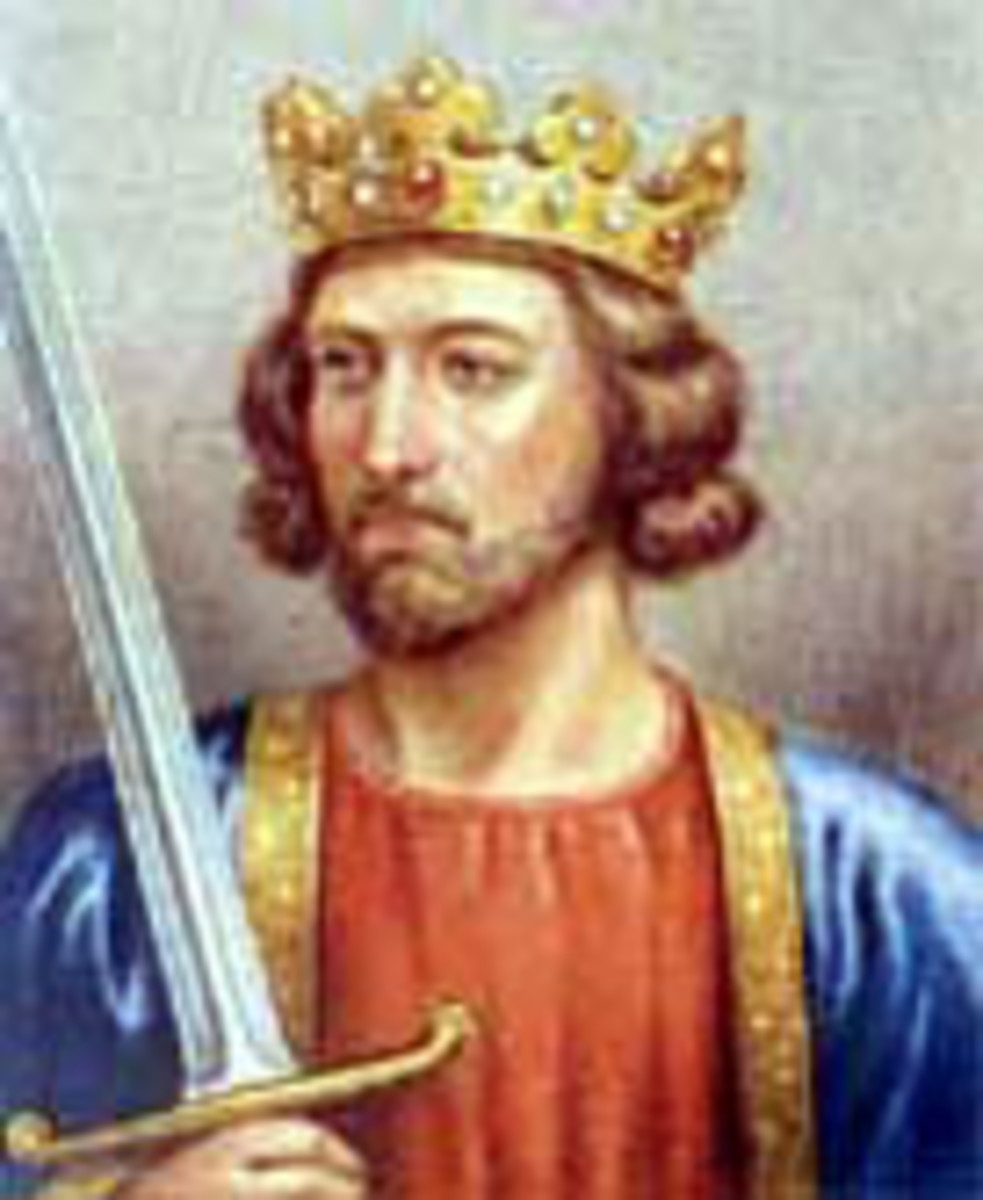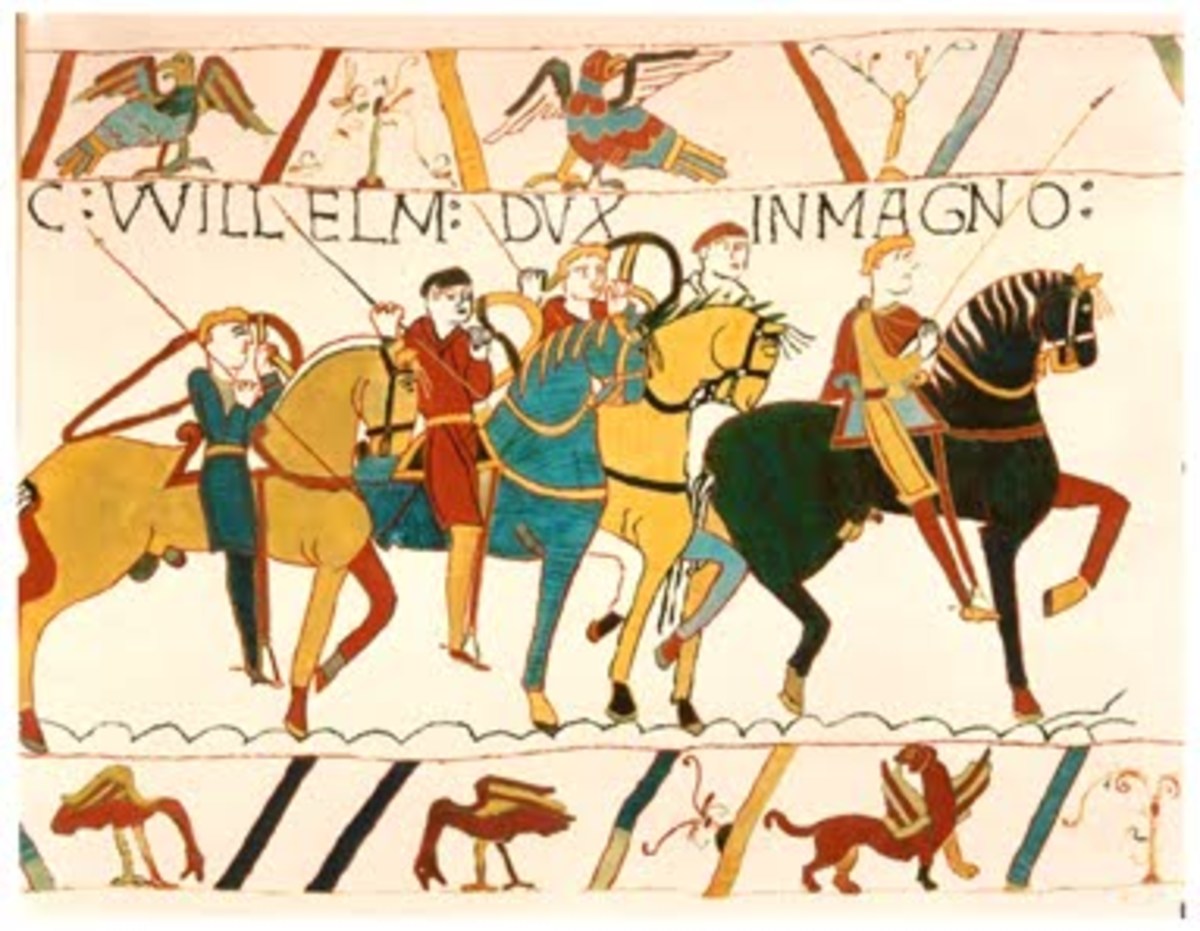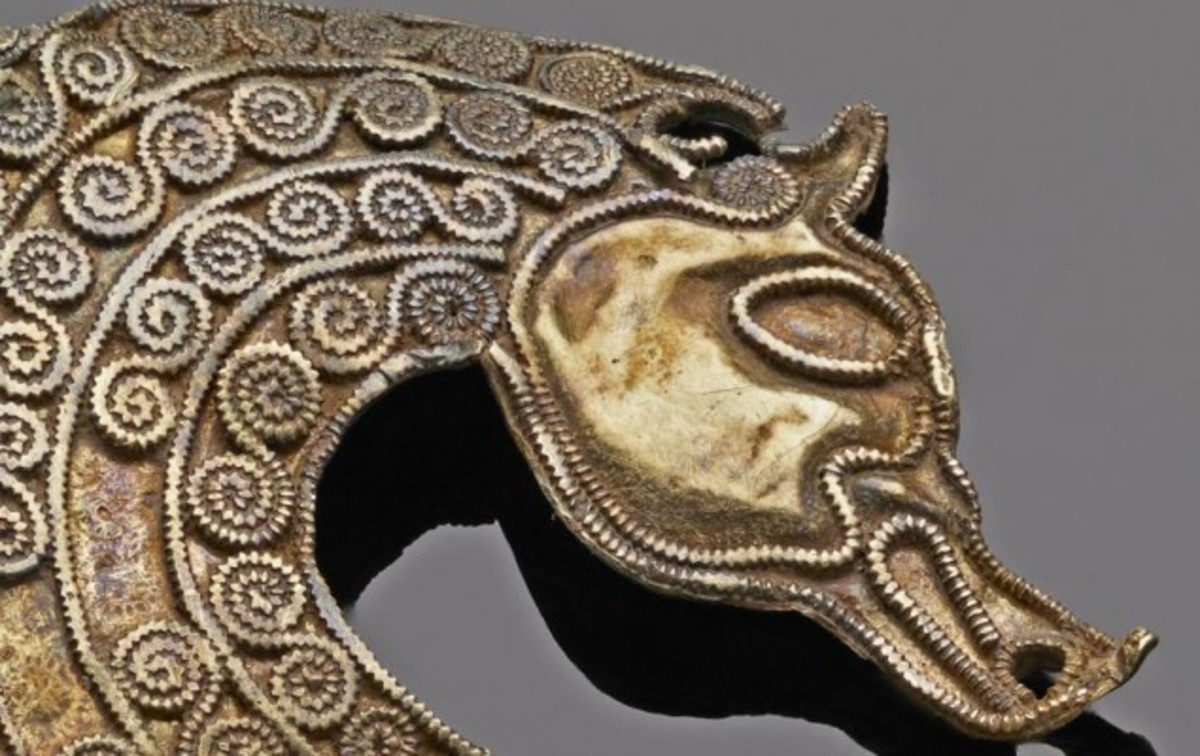- HubPages»
- Education and Science»
- History & Archaeology»
- History of Europe
The Glorious Revolution of 1688. A family dispute that became a constitutional watershed
Contents
1688. A year of great significance
Is our glorious Queen our real sovereign?
The story of the Glorious Revolution. How King James II lost his Crown
The Glorious Revolution gives the jackpot to the Elector of Hanover
The history of the Stuart dynasty since. Could the Glorious Revolution be reversed?
Brilliant video about the Glorious Revolution
The "Glorious Revolution". The Lion and the Unicorn really did fight
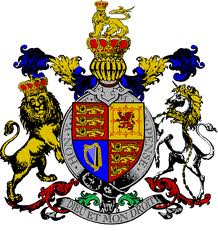
1688. A year of great significance
The Glorious Revolution of 1688 resulted in great changes in the constitutional and dynastic history of Great Britain, but like a lot of episodes in the story of these islands, it was a family dispute as well as a political upheaval. It may not even be completely over yet. Only time will tell. Read on if you want to find out what I mean.
Is she really sovereign?
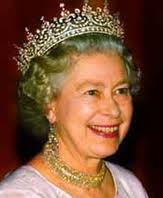
Is our glorious Queen our real sovereign?
Recently in this country, the streets were thronged with cheering people celebrating the 60 glorious years of the reign of our much beloved Queen Elizabeth II. From the far south in Devon and Cornwall to the further reaches of the North of Scotland, celebrations were held, beacons were lit and many toasts were drunk to the long life and prosperity of our revered monarch. I was among those who crowded into the space in front of Buckingham Palace, to cheer and wave flags when her Majesty and her family appeared on the balcony.
Oddly enough, not everybody in these islands were cheering and waving their banners. There were some Republicans snarling in corners. They didn't bother the majority of people. There will always be a lunatic fringe of anti-monarchists. They're not the subject of this article. Such irrelevancies, as they are, have no importance. We leave it to other countries, to tie themselves up in knots every few years, over who is going to head their states. The French and the Americans etc, can select their second- raters to either bankrupt their economies or lead their countries into disastrous wars. We've got the best system of government in the United Kingdom and we intend sticking with it.
Having said all that, not many of us here realise that the lady, we were all cheering for on that happy weekend in June, is technically a usurper. If the laws of monarchical succession were strictly adhered to, Elizabeth and Philip, along with Prince Charles, Prince William, Prince Harry and all the rest of the family, would be boarding a plane at Heathrow airport en route to permanent exile. The throne would be occupied by King Francis II, Duke of Bavaria and to Jacobite adherents, legitimate monarch of the United Kingdom of Great Britain, France and Ireland. Jacobites are supporters of the Stuart dynasty. The term comes from the Latin for James, “Jacobus”. James II was the last reigning Stuart King.
There is a backstory to this scenario. This article is intended to tell the tale of what happened in the latter part of the 17th century and the early section of the 18th, to bring about the curious situation where 1,500,000 royalists were standing in the rain cheering a lady, who technically had no more right to be standing on that Palace balcony, than any one of the soaking loyalists who were jumping up and down in excitement in front of her.
The protagonists in the Glorious Revolution
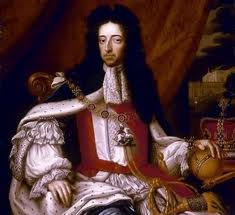
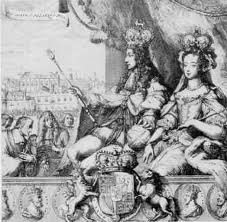
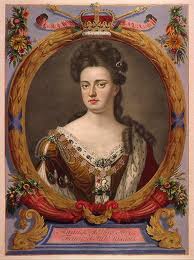
The story of the Glorious Revolution. How King James II lost his Crown
Our story actually begins in the early part of the 17th century. King James I of England, Scotland and France, (the first king of the Stuart dynasty), had a beloved daughter called Princess Elizabeth. This young Princess was married to the Elector Palatine, who later briefly became King of Bohemia. The young couple didn't last long as monarchs of that kingdom. They were defeated in one of the many wars that plagued Europe during that troubled century and they lived out the rest of their lives in various courts on the continent. Their success, or lack of it, as rulers is not pertinent to our tale. What is significant, however, is that they had a daughter called Sophia, who married the Elector of Hanover. She had a son called George, who in 1714 became King George I of Great Britain. This is the gentleman that Queen Elizabeth II is directly descended from. The shenanigans that led to his arrival on these shores, to be crowned king at Westminster Abbey, are to be the subject of the rest of this history lesson. I hope you find it to be both interesting and enlightening. Read on.
About 50 years after the young Princess Elizabeth left her family, to take up the uncertain life of wife to the Elector Palatine and sometime King of Bohemia, the throne of these islands was occupied by King Charles II. This very clever and witty ruler had a large amount of mistresses and one wife. He had no legitimate children, as his Queen, the Portuguese Princess Catherine of Braganza, was unable to have any children. He did have a son by one of his mistresses, but because he was born out of wedlock, he could not succeed. This son was called the Duke of Monmouth. You will hear more about him later in the story. Because the King had no legitimate successors of his own loins, so to speak, the heir to the throne was his younger brother, James, Duke of York. This did not meet with the overall approval of the people, the reason being that the Duke of York was a Catholic convert. The country had been Protestant for the previous 150 years and many of the inhabitants feared that a Catholic King would try to reverse the Reformation. There was a strong movement during the 1680s to exclude James from the succession, in favour of the Duke of Monmouth. People wanted Monmouth to be declared legitimate. King Charles, who was very fond of his son, nevertheless gave his backing to his brother. The result was that when God called for the King in 1685, he was succeeded by the Duke of York as King James II.
Almost immediately there was a rebellion led by the Duke of Monmouth and his supporters. Monmouth had a lot of followers from Devon and Cornwall and the West Country, but they were defeated by the government forces and the Duke was captured. He was brought to London and beheaded as a traitor. The unfortunate rebel did not have a very good end. The executioner was particularly inept and it took six or seven blows of the axe to sever his head. His followers did not fare any better. Hundreds of them were hanged, in what later came to be called the “Bloody Assizes”, presided over by Lord Chief Justice Jefferies. Things went more smoothly then for a while, but when King James started to abolish some of the disabilities that affected Catholics and promoted some members of his own faith in the Army, the Protestants started to get alarmed. There was trouble with the Protestant Church of England as well. When the king ordered that a Declaration of the Liberty of Conscience be read in all churches, seven of the bishops refused. They were arrested and conveyed to prison in the Tower of London. Crowds of people lined the banks of the Thames, to receive their blessing as they were being conveyed to the Tower.
This is the point in our story where I must take the reader across the North Sea to Holland. The time has come to introduce the daughter of King James, (and a very lovely daughter she was too). She was the Princess Mary, one of two daughters King James had by his first wife, Anne Hyde. There is quite a story around that marriage as well, involving disapproving mother-in-law's etc, but I haven't time to go into that here. His younger daughter was Princess Anne of Denmark. She will have a part to play in our story as well. Princess Mary was married to Prince William of Orange. He was the nephew of King James and both of them would have a claim to the throne after his death. The Princess was his direct heir. The people had decided, that if they waited a few years, the Catholic King would be dead and any changes he might make could be reversed by his successor, the safely Protestant Princess Mary.
In the year 1688 all these complacent ideas were thrown into chaos. The cause of all this upset was the arrival on the scene of a lovely little baby boy. The King had a son, (Prince James), by his second wife, Mary of Modena and the people of England, (who really didn't like Catholics), were faced with the prospect of a Catholic dynasty ruling the country.Many scurrilous rumours were circulated about the birth of this prince. The most infamous one was, that the Queen was not pregnant and the baby was an imposter, smuggled into the maternity room in a warming pan. The result of all this controversy was that a letter was sent, signed by six lords and one bishop, to William asking him to come to Britain to sort out King James. William landed at Torbay in Devon in the autumn of the same year. He advanced on London at the head of an army. Princess Anne and her husband, Prince George of Denmark, deserted to the invaders almost immediately. The King seems to have had a breakdown. I think the idea that both his daughters had deserted knocked all the fight out of him and he was easily captured. He wasn't very strongly guarded however, (some think that was intentional). He escaped to France within a few days.
Parliament then offered the Crown to William and Mary jointly, to rule as dual sovereigns. This was the first and only time that two monarchs occupied the seat of power together. The unique arrangement came about because William did not want to be ruled by his wife and Mary believed that wives should be subject to their husbands. Parliament also demanded that the new sovereigns accept a Bill of Rights that limited the power that could be exercised by a King or Queen in future. This was done in order to lessen the possibility, of the perceived abuses of King James, occurring again.
The ex-King was received as an honoured guest at the court of Louis XIV in France. King Louis refused to recognise William and Mary. James was given the Palace of St Germain as a residence for himself, his Queen and his baby son. He lived there in great state, as King of England, Scotland, Ireland and France. He even touched for the “King's evil “as King of France. For those of you who don't know, it was believed that the disease called Scrofula (a skin disease) could be cured by the miraculous touch from a sovereign. This illness was known as the “King's evil”. Anyway, to get back to our story, King Louis sponsored his guest in an invasion of Ireland, as that kingdom remained loyal to King James. It was hoped that he could invade Britain from there and thus regain his lost throne. The campaign in Ireland was not a success. King William travelled to that country at the head of an army and the forces of King James were decisively defeated at the Battle of the Boyne in 1690. James fled back to France and he made no really serious attempts after that to rectify his situation.
His daughter, Queen Mary I, died of smallpox in 1694 but her husband continued ruling, as King William III until his death in 1702. He was succeeded by his sister-in-law, Princess Anne of Denmark, who became Queen Anne. Although the new Queen had given birth to 16 children, none of them had lived to adulthood and she had no direct heirs. Her conscience always bothered her over her treatment of her father and her half-brother. She gave serious consideration to leaving her crown to the exiled Prince James, but he would be required to become a Protestant first. Since the exiles refused to consider that idea, the offer was withdrawn. A law had been passed in 1701 called the Act of Settlement. Parliament had considered the problems that might arise on the death of Queen Anne. They wanted to exclude at all costs the return of the Catholic dynasty. The Act of Settlement forbids any Catholic, or anybody married to a Catholic, from being in the line of succession. This act is still in force and is one of the fundamental constitutional laws in Great Britain and throughout the 15 other Commonwealth realms.
George I. The winner of the jackpot
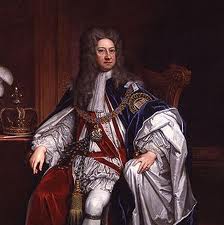
The Glorious Revolution gives the jackpot to the Elector of Hanover
The passing of this law brings us back to Elizabeth of Bohemia and her daughter Sophia, Electress of Hanover. Sophia was not technically entitled to become Queen. But then strictly speaking, neither was Queen Anne. Parliament required a Protestant heir and the Electress was the only one available. (If you don't know what an Electress, or an Elector was, don't expect me to explain it to you. I know, but there are only just so many digressions I'm prepared to make. Look up “Holy Roman Empire” if you want to find out. The Act of Settlement established the succession to the throne on Sophia and her descendants.
Sophia died of old age, about a month before Queen Anne went to meet her maker, to become the last Stuart monarch to rule in this country. Sophia's son, George, ascended the throne instead of his mother. He became King George I. The lady we were all waving at in June is his direct descendant.
Brilliant video about the Glorious Revolution
The exiled monarchs.
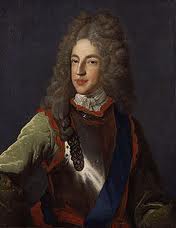
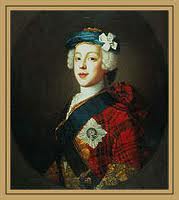
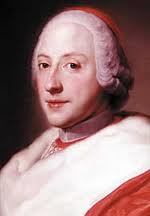

The history of the Stuart dynasty since. Could the Glorious Revolution be reversed?
It just remains for me to tell you briefly about King James II and his descendants. I also need to explain how the current Duke of Bavaria is considered by some to be King Francis II of the United Kingdom.
King James died early in the 18th century, (I think it was 1702). His son, Prince James, was considered by his supporters to be King James III. He tried unsuccessfully to capture the kingdom in 1715. He never personally attempted it again. His elder son, Prince Charles Edward Stuart, (Bonnie Prince Charlie), landed in Scotland in the 1740s. The intention was to regain the Crown for his father. After some initial success in that country, he invaded England. It's possible, that if he had marched to London, he might have succeeded in his mission. The people of England didn't really rise to support him though and he retreated back to the Scottish Highlands. In 1745 Prince Charles was utterly defeated at the Battle of Culloden. He was very lucky to escape back to France with his life. After that there were no more military efforts made to restore the Stuart dynasty. The exiled James III died in the 1770s and was succeeded by Prince Charles Edward, as Charles III. By this stage the family were no longer living in France, but had moved to Italy. Charles had become a hopeless alcoholic. (He developed a taste for strong drink in Scotland and it just took over his life). When he died, his titles were taken over by his younger brother, Prince Henry as Henry IX, but he had become a cardinal in the Catholic Church and therefore was destined not to have any children to succeed him. When he died in 1807, his claims were devolved to Charles Emanuel IV of Savoy, who was a descendant of King Charles I of England and Scotland. Through various convolutions, the claim passed to the Royal house of Bavaria. Duke Francis of Bavaria is the present Stuart claimant. None of the contenders since the cardinal King have pressed their claims. Neither has any relinquished them. We had the curious situation in World War I, when Prince Rupprecht of Bavaria, (an officer in the Imperial German Army), was fighting a war against his own kingdom.
There is no prospect in this country, of her Majesty Queen Elizabeth II being asked to pack her bags and make way for King Francis II. There is talk however about amending the Act of Settlement, in order to remove the ban on Catholics inheriting the throne. If they do this and the Bavarian royal family wish to move from Munich to London, it might be possible for them to sue in the courts for re-establishment of their rights. This opens all kinds of intriguing possibilities.
Possibly the weirdest book ever. Readers love it though



